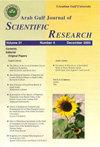Determination of heavy metals in cow's and buffalo's fresh raw milk from different areas of Pakistan
Q4 Business, Management and Accounting
引用次数: 1
Abstract
PurposeThe presence of heavy metals in milk causes many acute and chronic physiological dysfunctions in human organs. The present study aims to investigate the heavy metals in cow's and buffalo's milk of two major cities, Karachi and Gujranwala, Pakistan to estimate metal intake by humans from this source.Design/methodology/approachIn total, 48 milk samples from 2 cities were drawn from animals' udder to avoid contamination. Each sample was digested with nitric acid at 105 oC (degree Celsius) on a pre-heated electric hot plate to investigate the metals by atomic absorption spectroscopy (flame type). Air-acetylene technique analyzed chromium, cadmium and lead, and the hydride method analyzed arsenic in the milk samples.FindingsThe results revealed the highest mean lead concentration (19.65 ± 43.86 ppb) in the milk samples, followed by chromium (2.10 ± 2.33 ppb) and arsenic (0.48 ± 0.73 ppb). Cadmium was not detected in any sample, assuming cadmium's occurrence was below the detection level. The concentrations of all the metals in the samples of the two cities do not differ statistically. Lead concentrations in the buffalo's milk were higher than in cow's milk (p < 0.05). However, the concentrations of arsenic and chromium between buffalo's and cow's milk do not differ statistically. The present study reveals a lower level of metals in the milk than those conducted elsewhere. The mean concentrations of all the metals met the World Health Organization's (WHO) safety guidelines (1993).Research limitations/implicationsAlthough cadmium causes toxicity in the human body, cadmium could not be measured because cadmium's concentration was below the detection level, which is 1 ppb.Practical implicationsThis study will help reduce the toxic metals in our environment, and the sources of heavy metals, particularly from the industrial sector could be identified. The feed and water consumed by the milking animals could be carefully used for feeding them.Social implicationsThis study will help reduce the diseases and malfunction of human organs and organ systems since these heavy metals cause toxicity and carcinogenicity in humans. Arsenic and chromium cause cancer while lead causes encephalopathy (a brain disease).Originality/valueThe study reports heavy metal concentrations in the two attributes of four independent variables of raw milk samples that were scarcely reported from Pakistan.巴基斯坦不同地区鲜奶和水牛鲜奶中重金属的测定
目的牛奶中重金属的存在会引起人体器官的许多急慢性生理功能障碍。本研究旨在调查巴基斯坦卡拉奇和古吉兰瓦拉两个主要城市牛奶和水牛奶中的重金属,以估计人类从这一来源摄入的金属。设计/方法/方法共从2个城市的动物乳房中抽取48份牛奶样本,以避免污染。每个样品在预热的电热板上用硝酸在105℃(摄氏度)下消化,用原子吸收光谱(火焰型)研究金属。空气-乙炔法分析了牛奶样品中的铬、镉和铅,氢化物法分析了牛奶样品中的砷。结果显示,牛奶样品中铅的平均浓度最高(19.65±43.86 ppb),其次是铬(2.10±2.33 ppb)和砷(0.48±0.73 ppb)。假设镉的含量低于检测水平,则未在任何样品中检测到镉。这两个城市样品中所有金属的浓度在统计上没有差别。水牛乳中的铅含量高于普通牛奶(p < 0.05)。然而,水牛奶和牛奶中砷和铬的浓度在统计上没有差别。目前的研究表明,牛奶中的金属含量低于其他地方进行的研究。所有金属的平均浓度均符合世界卫生组织(卫生组织)的安全准则(1993年)。研究局限/意义虽然镉对人体有毒性,但由于镉的浓度低于1 ppb的检测水平,因此无法测量镉。实际意义这项研究将有助于减少环境中的有毒金属,并可以确定重金属的来源,特别是来自工业部门的重金属。挤奶动物所消耗的饲料和水可以小心地用来喂养它们。社会意义由于这些重金属对人体具有毒性和致癌性,本研究将有助于减少人体器官和器官系统的疾病和功能障碍。砷和铬会致癌,而铅会导致脑病(一种脑部疾病)。原创性/价值该研究报告了巴基斯坦鲜少报道的原料牛奶样品中四个自变量的两个属性中的重金属浓度。
本文章由计算机程序翻译,如有差异,请以英文原文为准。
求助全文
约1分钟内获得全文
求助全文
来源期刊

Arab Gulf Journal of Scientific Research
综合性期刊-综合性期刊
CiteScore
1.00
自引率
0.00%
发文量
0
审稿时长
>12 weeks
期刊介绍:
Information not localized
 求助内容:
求助内容: 应助结果提醒方式:
应助结果提醒方式:


